The Ancient City Of Epidaurus And The Temple of Asclepius - A Must-see For Tourists
What is remarkable about the Peloponnese is its fascinating excursions, many objects created hundreds of years ago by ancient people, which still impress and delight the eyes, and not some mythical trips to “the place where Aphrodite bathed”, etc. You just wonder how it was possible to build this in those days; such famous objects include the Acropolis in Athens, the Corinth Canal, Meteora, and the Epidaurus Theater.
Last Sunday, we decided to explore one more interesting ancient place in the Peloponnese.
An excursion to the ancient theater of Epidaurus and the temple of Asclepius (ancient Greek healer) makes you expect something mystical and unknown. The natural beauty along the way to the theater brightened up our trip. The Ancient Epidaurus is a well-preserved theater, and to this day it hosts concerts by world celebrities.

The theater apppeared to be a masterpiece of human hands' creation. The perfectly preserved amphitheater is already about 2,500 years old. The theater was excavated at the end of the 19th century, and they dug it out for 6 years.
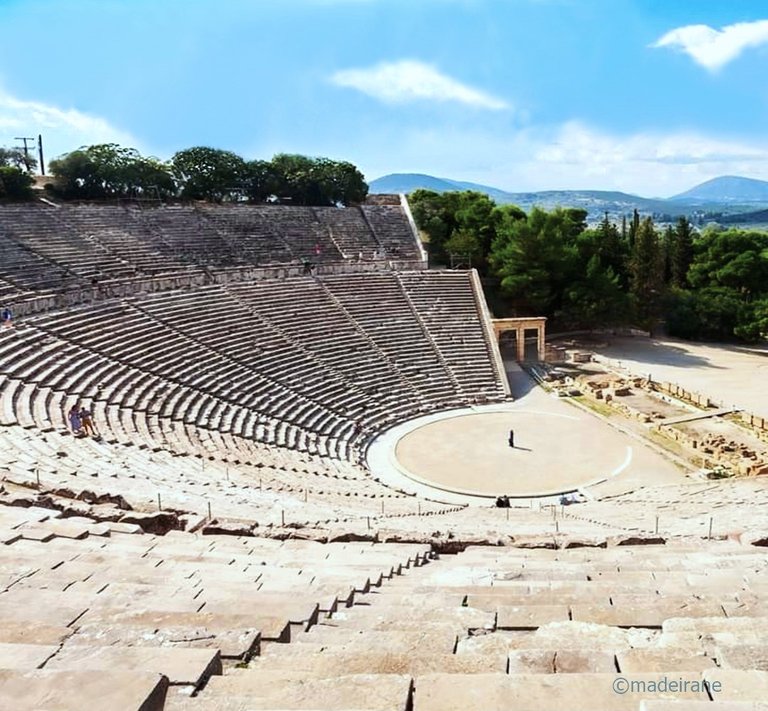
An open-air theater that is famous for its excellent acoustics. It is interesting because it has amazing acoustics; even the most insignificant sound, for example, from a thrown coin or a clap made in the arena will be heard high in the very top rows.
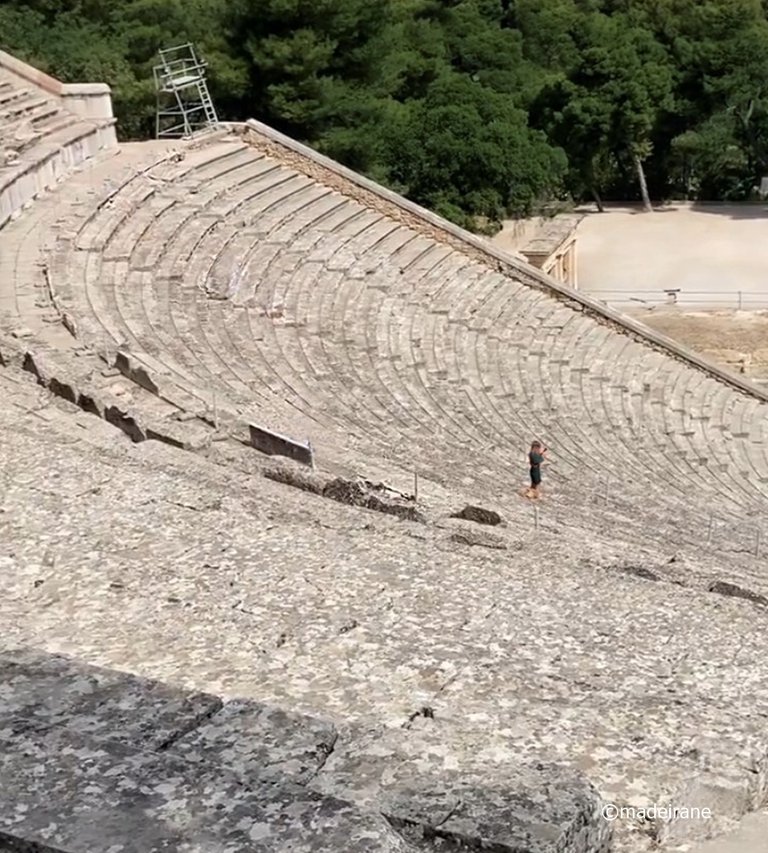
The theater was built in the 300 BC. It is very large, seats about 15,000 spectators, and everyone can hear absolutely everything, even better than they can see, since the last rows are very high up, and I couldn’t see any small details very well from there. The theater was divided into two parts: 21 rows were intended for ordinary poor people, and 34 lower rows for priests and rich nobility.

In the middle of the orchestra, in the very center, lies a small marble board. Even sitting in the back row, you can hear the sound of a coin falling on the board. Don't believe me? Try it and see for yourself.
Employees of the Georgia Institute of Technology found an explanation for this phenomenon. Stone chairs cause the clear sound's effect. Simple stone seats act as a filter and cut out low-frequency acoustic vibrations. They also absorbs the noise of the theater. While high frequency vibrations are generated, these chairs are directed into the audience and enhance the effect. Low-frequency vibrations catch special irregularities on the backs of the seats. But whether this is an accurate calculation by the architect or a simple coincidence is not clear.

The arena is still operational; concerts and performances are staged here, and anyone can try their hand at it or simply try out the acoustic capabilities and sing acapella to the delight of tourists, which, by the way, many did.
The arena is still operational; concerts and performances are staged here, and anyone can try their hand at it or simply try out its acoustic abilities and sing to the delight of tourists, which, by the way, many did.
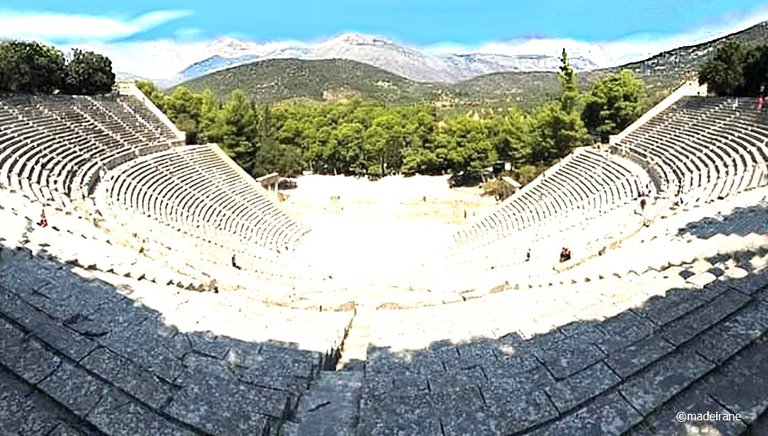
The lower part of the amphitheater was started by the Greeks, but completed by the Romans. On the sides there are columns from the gates through which actors used to enter the stage.
We tried all the sound effects - from coins, whispers, to loud singing. Sitting at the very top, I thought about how interesting it would be to watch a performance on this ancient Greek stage, surrounded by mountains. And it doesn't matter at all that I don't understand Greek. It would still be great.

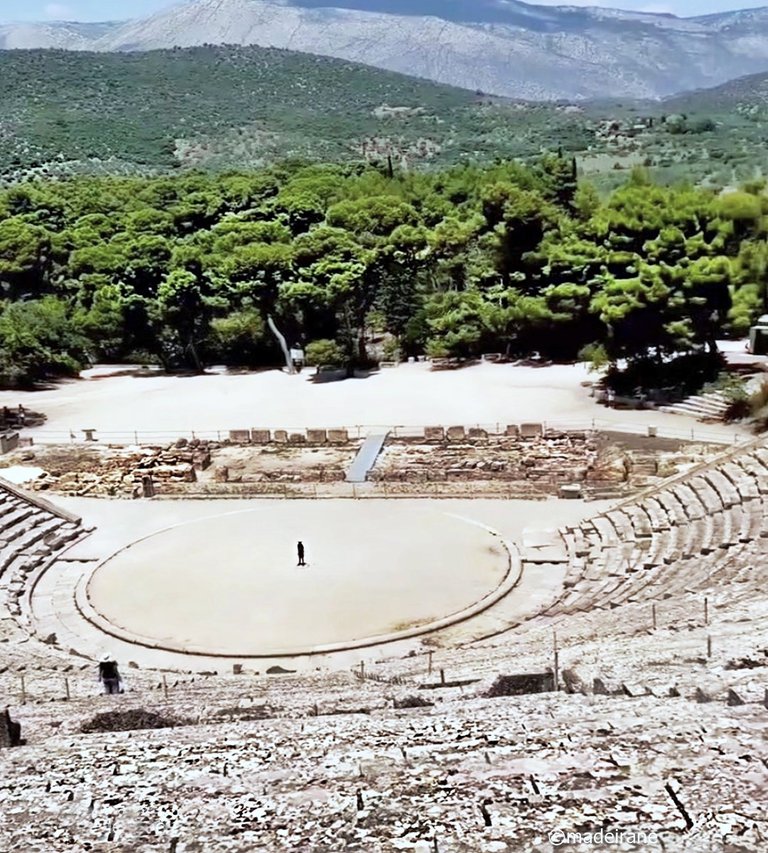
The Temple of Asclepius is located nearby, and there is also a rather interesting antique museum with many sculptures, as well as the famous sayings of Asclepius about the usefulness of sleep treatment, psychotherapy, and theater.
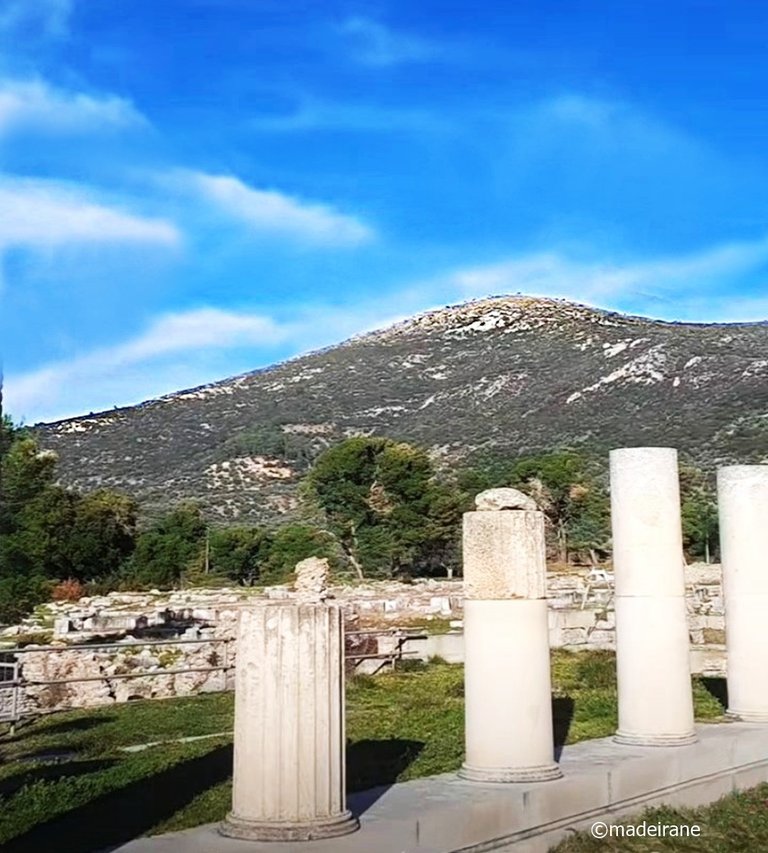
There are several versions of the origin of Asclepius. According to the most popular legend, Asclepius was the son of Apollo and the nymph Coronis. From infancy, he was given to be raised by the centaur Chiron, who taught him the art of healing. Soon, the capable student surpassed the teacher. It was believed that Asclepius was famous not only for healing physical and mental illnesses, but it had the ability to resurrect people from the dead.

The Greeks called it Asklepion because it was dedicated to the god of healing, Asclepius. By the way, it was thanks to him that this city appeared. Pilgrims flooded the temple for healing, and the priests were those who healed them. Here, patients were observed, medical histories, progress and results of treatment were recorded.
When you look for a place on the map and on the Internet, you should consider both names: Epidaurus (Epidavros) and the Sanctuary of Asclepius.
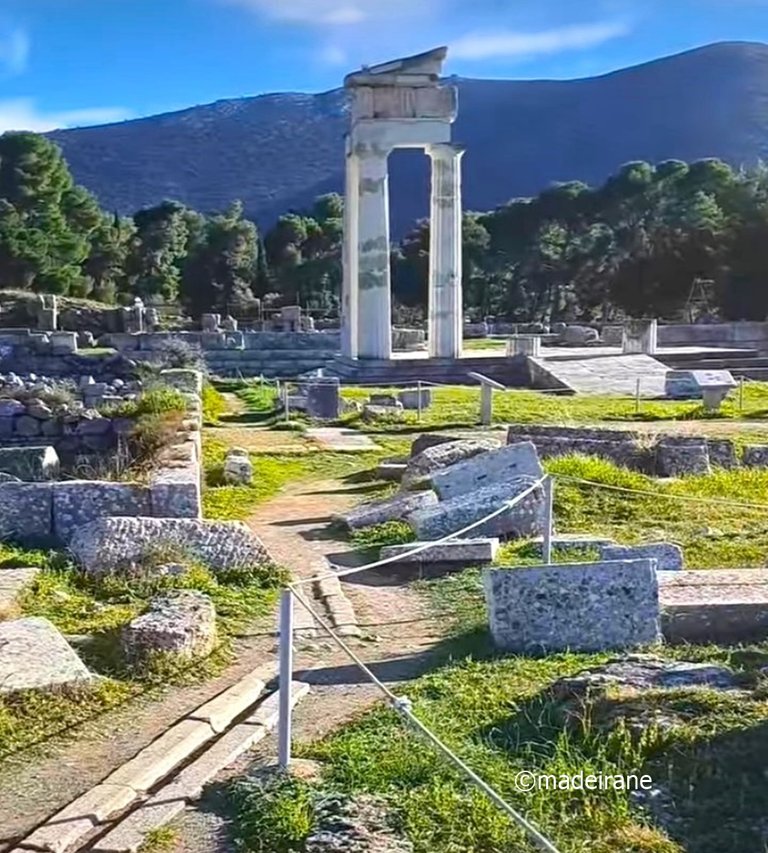
Centuries ago, the city was the capital of the Epidauria region. It had its own seaport and island colonies. mors say that the city was rich and famous. Despite the fact that there were many Asklepions in Greece, this temple enjoyed worldwide fame and attracted tens of thousands of people.
Unfortunately, only cobblestones remain at the site of the temple, and you can understand what it looked like by purchasing brochures and postcards. But all the same, I’ll tell you the energy is crazy here, as in all of Greece.
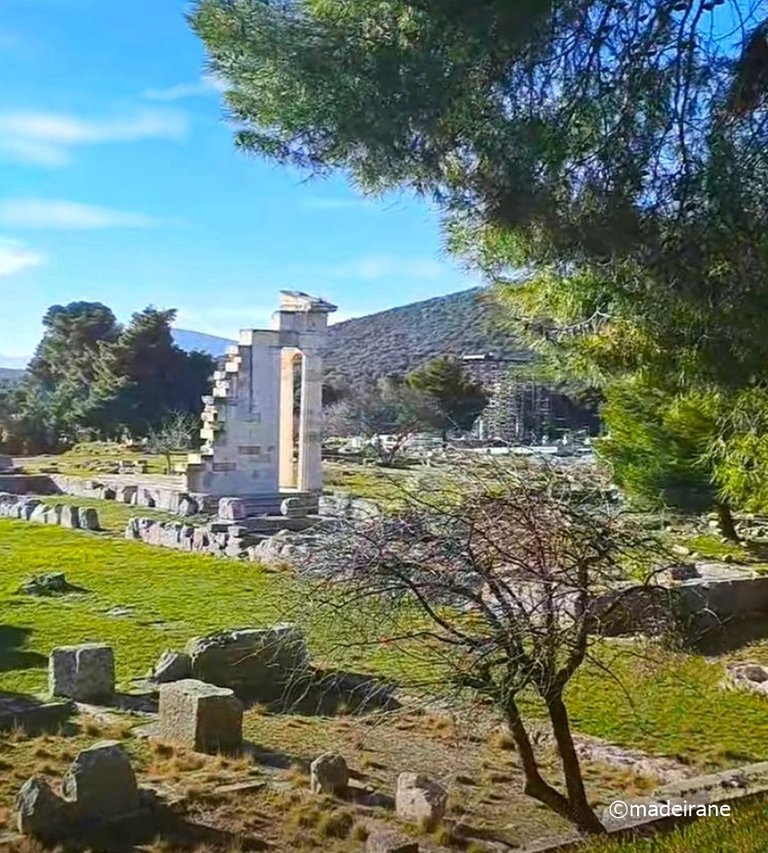
In general, I have doubts about all places of power - you never know what they come up with! And I hadn’t read anything like that about the ancient Epidaurus and the sanctuary of Asclepius before my visit there. But there, for the first time, I suddenly just felt it. Indeed, the amazing and very bright energy of this place.
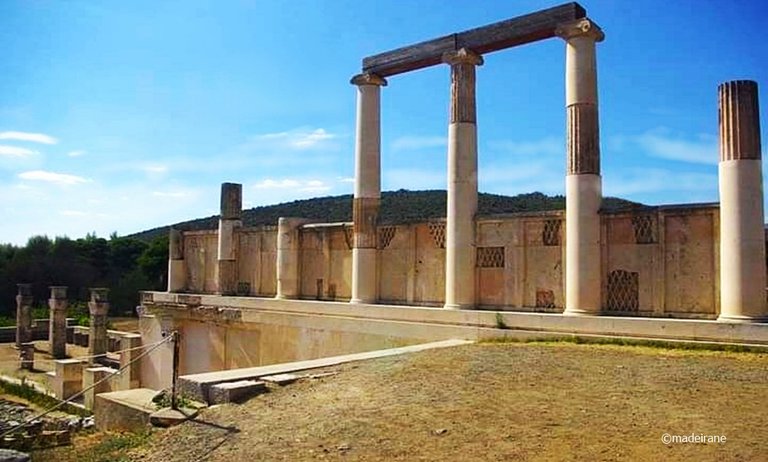
What did it mean to be sick in ancient times? Any ailment is mortally dangerous, since there are no medicines, no necessary knowledge, no special people involved in treatment. When exploring the ruins of ancient cities, you will not find hospitals and infirmaries - all this appeared much later. However, in the Greek pantheon there was a god responsible for health - Asclepius. His sanctuaries were called Asklepion and people were treated there. And the center of the cult of this god was the small city of Epidaurus in Argolis.
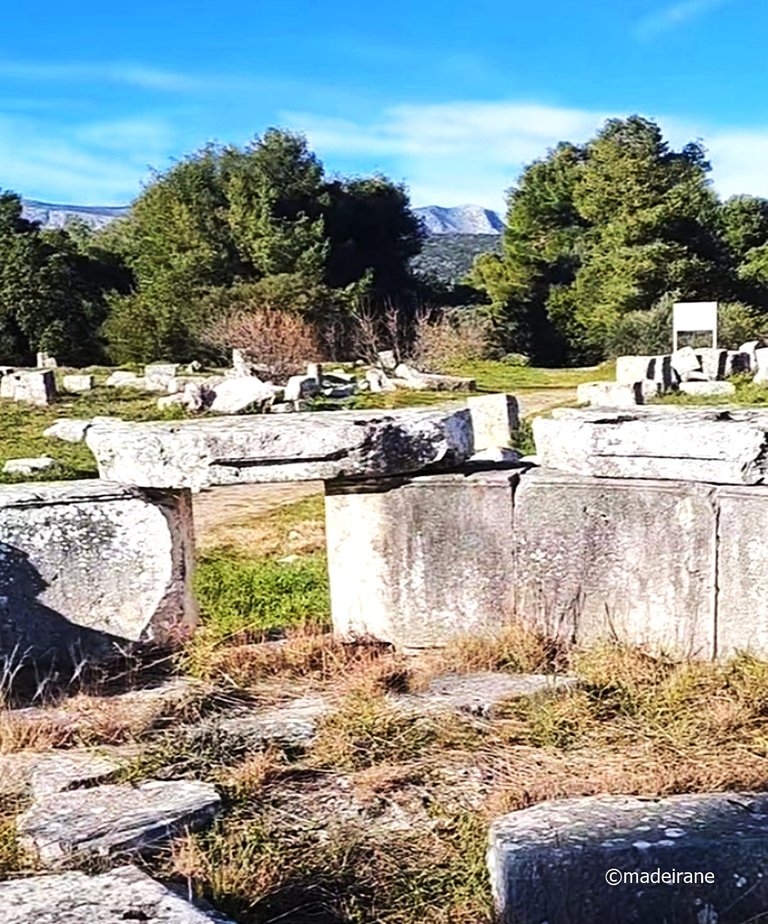
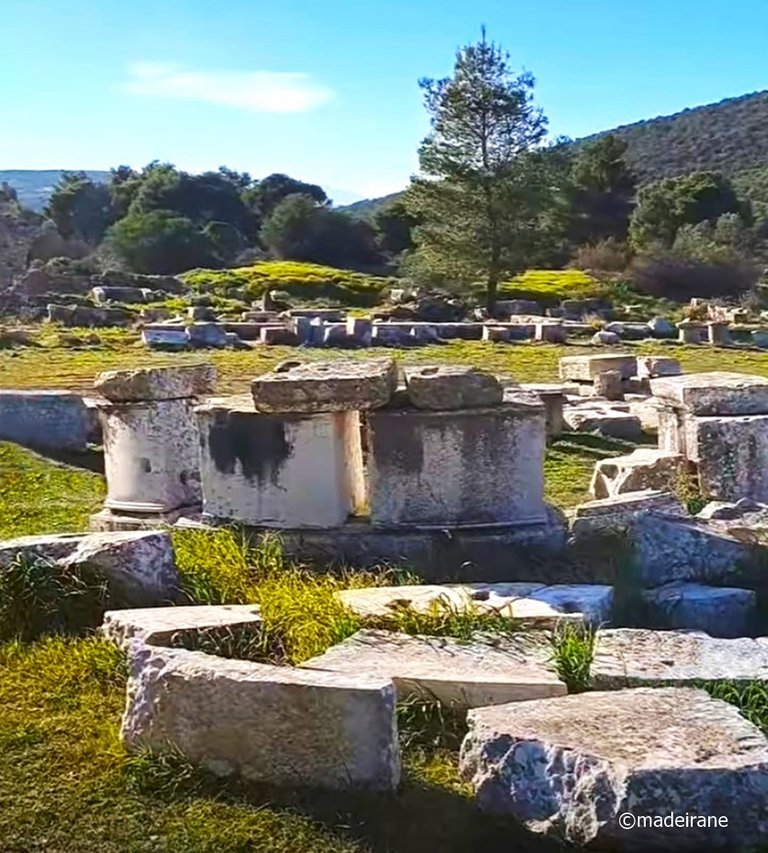
True, the theater was also subject to the same system as most other buildings in the city. The ancients believed that watching theatrical performances and listening to music promoted recovery. And since there were many patients, mass sessions were held in a very large theater.
In addition, the city has preserved a Roman odeon, which was previously a gymnasium, an abaton (what is now called a hospital), and the remains of a stadium where large-scale sports competitions were held - a competitor to the Olympic Games.
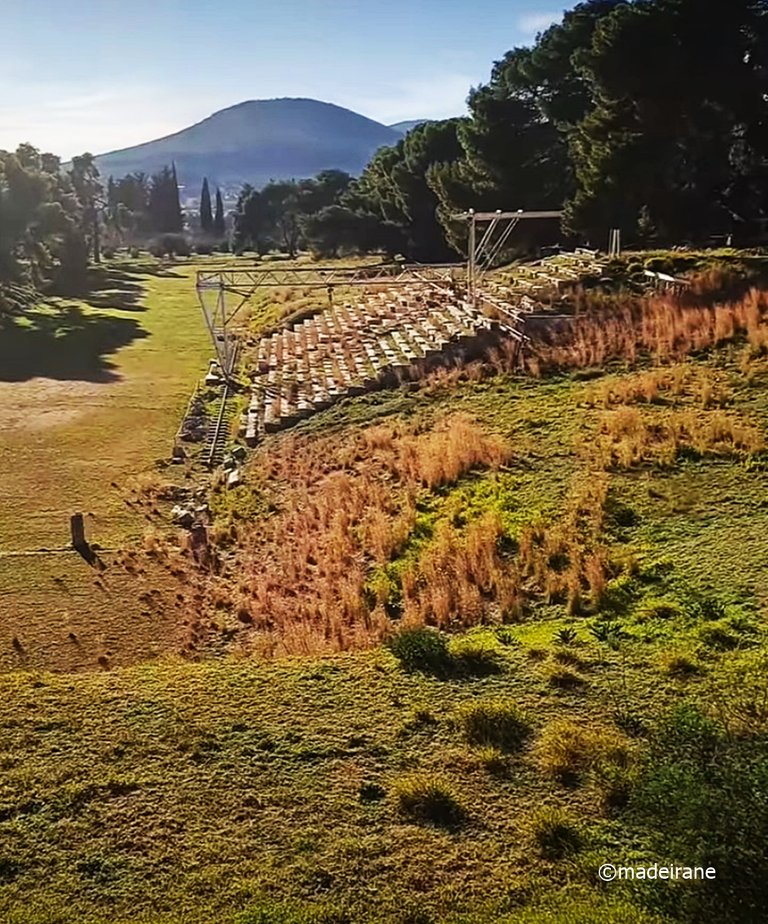
We went down to the museum. The Archaeological Museum is located at the entrance to the architectural complex of Asklepion. It contains exhibits that were found during excavations of the temple.
Some of them are originals, some are copies and originals are in the Louvre, the British Museum and the Acropolis Museum. Copies are easy to distinguish - they are made of light marble.
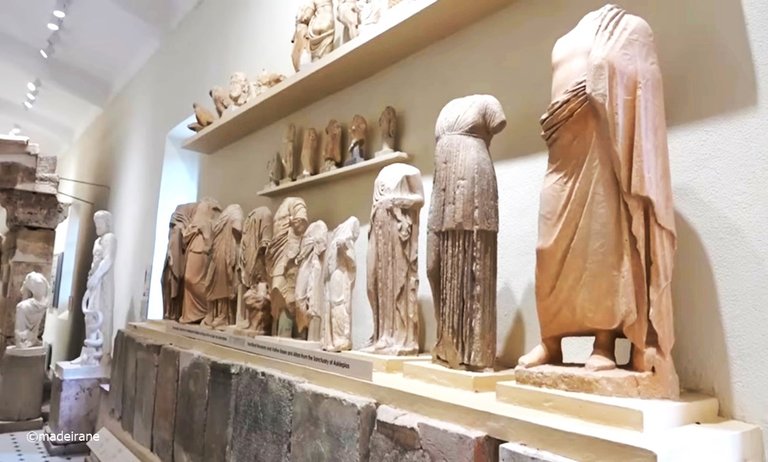
The museum is not big. There are only 3 halls, but it is educational and interesting, because... all the finds there, as well as the architectural monuments, are about 2500 years old.
The first hall contains ancient medical instruments, several statues, lamps, recipes written on stone tablets and various clay gifts to the temple. Just think, these instruments were used to treat people when medicine as such did not yet exist! It's unimaginable, honestly. True, it’s scary to imagine what happened instead of anesthesia and whether there was any at all...
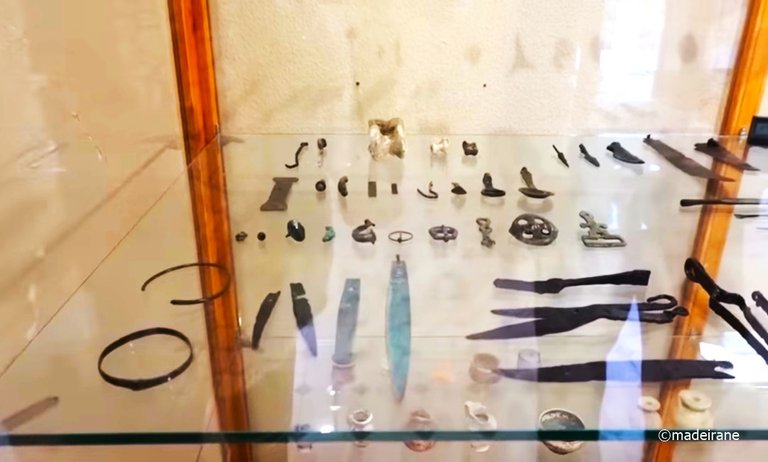
In the second hall, there are statues of different shapes, types and sizes. There are donations from cured patients, and casts. In the third hall, there is a model of the Temple of Asclepius. Unfortunately, it was not possible to take a photo.
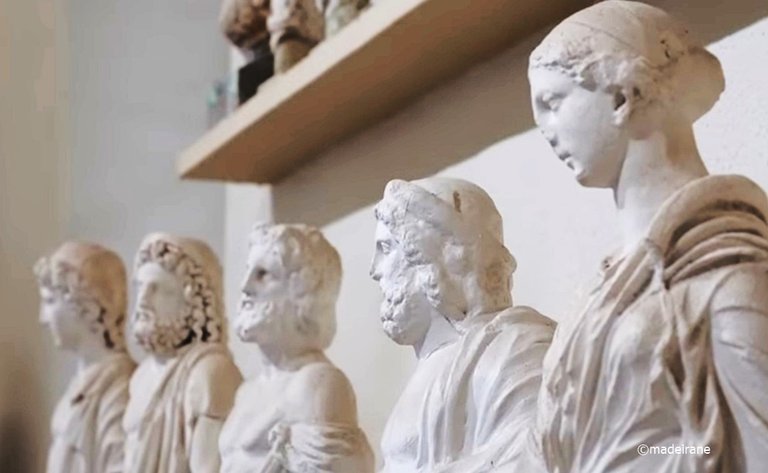
Epidaurus and Asclepius are must-see places if tourists are vacationing in the Peloponnese, especially if you are in the wonderful town of Nafplio or next to it.
An ancient sanatorium! Sanctuary of Asclepius! And the famous amphitheater. Oh!... Since I am a fan of all sorts of historical ruins, I definitely have to visit this place! The place captivates you immediately and forever. Air, pine trees and antiquity... The feeling is great! Photos do not convey the chic peace and tranquility of the place. It's really great there.
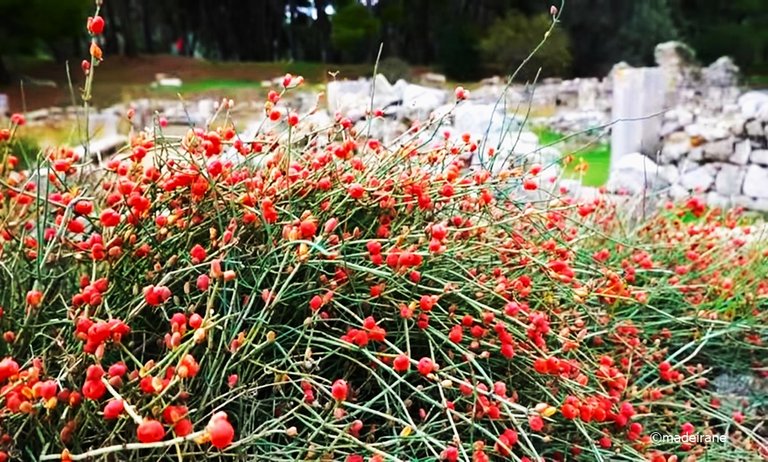
There are a lot of stones, ruins, grass, and tree roots all around. Therefore, if possible, wear comfortable closed shoes with non-slip soles.
Translated from Lithuanian with DeepL.com (free version).
💝💝💝💝💝💝💝💝💝💝
With love, @madeirane
© 2024
Peloponesas išsiskiria tuo, kad čia galima nuvykti į įspūdingas ekskursijas, pamatyti daugybę prieš šimtus metų senovės žmonių sukurtų objektų, kurie vis dar daro įspūdį ir džiugina akį, o ne mitines keliones į "vietą, kur maudėsi Afroditė" ir pan. Tiesiog stebiesi, kaip anais laikais buvo įmanoma tai pastatyti; tokie garsūs objektai yra Atėnų Akropolis, Korinto kanalas, Meteora ir Epidaurus teatras.
Praėjusį sekmadienį nusprendėme patyrinėti dar vieną įdomią senovinę vietą Peloponeso pusiasalyje.
Ekskursija į antikinį Epidaurus teatrą ir Asklepijaus (senovės graikų gydytojo) šventyklą verčia tikėtis kažko mistiško ir nežinomo. Gamtos grožis pakeliui į teatrą praskaidrino mūsų kelionę. Antikinis Epidaurus teatras yra gerai išsilaikęs, ir iki šių dienų jame vyksta pasaulio garsenybių koncertai.
Teatras atrodė kaip žmogaus rankų kūrinys. Puikiai išlikusiam amfiteatrui jau apie 2500 metų. Teatras buvo kasinėjamas XIX a. pabaigoje, kasinėjimai truko 6 metus.
Teatras po atviru dangumi, garsėjantis puikia akustika. Jis įdomus tuo, kad pasižymi nuostabia akustika; net menkiausias garsas, pavyzdžiui, mestos monetos ar arenoje sklindantis plojimai, bus girdimas aukštai pačiose viršutinėse eilėse.
Teatras pastatytas 300 m. pr. m. e. Jis labai didelis, talpina apie 15 000 žiūrovų, ir visi gali girdėti absoliučiai viską, netgi geriau nei matyti, nes paskutinės eilės yra labai aukštai, o iš ten negalėjau gerai įžiūrėti jokių smulkių detalių.
Pačiame orkestro viduryje, pačiame centre, stovi nedidelė marmurinė lenta. Net sėdėdami paskutinėje eilėje galite išgirsti ant lentos krintančios monetos garsą. Netikite manimi? Pabandykite ir įsitikinkite patys.
Džordžijos technologijos instituto darbuotojai rado šio reiškinio paaiškinimą. Akmeninės kėdės sukelia aiškaus garso efektą. Paprastos akmeninės kėdės veikia kaip filtras ir išjungia žemo dažnio akustinius virpesius. Jos taip pat sugeria teatro triukšmą. Nors susidaro aukšto dažnio vibracijos, šios kėdės nukreipiamos į žiūrovus ir sustiprina efektą. Žemo dažnio vibracijos pagauna specialius nelygumus ant sėdynių atlošų. Tačiau neaišku, ar tai tikslus architekto apskaičiavimas, ar paprasčiausias sutapimas.
Arena tebeveikia, čia rengiami koncertai ir spektakliai, o kiekvienas gali išbandyti savo jėgas arba tiesiog išbandyti akustines galimybes ir turistų džiaugsmui dainuoti acapella, ką, beje, daugelis ir darė.
Arena tebeveikia, čia rengiami koncertai ir pasirodymai, ir kiekvienas gali išbandyti savo jėgas arba tiesiog išbandyti jos akustines galimybes ir dainuoti turistų džiaugsmui, ką, beje, daugelis ir darė.
Apatinę amfiteatro dalį pradėjo statyti graikai, bet užbaigė romėnai. Šonuose išlikusios kolonos nuo vartų, pro kuriuos į sceną patekdavo aktoriai.
Išbandėme visus garso efektus - nuo monetų, šnabždesių iki garsaus dainavimo. Sėdėdamas pačiame viršuje galvojau, kaip būtų įdomu stebėti spektaklį šioje senovės Graikijos scenoje, apsuptoje kalnų. Ir visai nesvarbu, kad nesuprantu graikų kalbos. Vis tiek būtų puiku.
Netoliese yra Asklepijaus šventykla, taip pat gana įdomus antikinis muziejus su daugybe skulptūrų ir garsiais Asklepijaus posakiais apie miego gydymo, psichoterapijos ir teatro naudą.
Yra kelios Asklepijaus kilmės versijos. Pasak populiariausios legendos, Asklepijas buvo Apolono ir nimfos Coronis sūnus. Nuo kūdikystės jis buvo atiduotas auginti kentaurui Chironui, kuris išmokė jį gydymo meno. Netrukus gabus mokinys pranoko mokytoją. Buvo tikima, kad Asklepijas garsėjo ne tik fizinių ir psichinių ligų gydymu, bet ir gebėjimu prikelti žmones iš mirusiųjų.
Graikai jį vadino Asklepionu, nes jis buvo skirtas gydymo dievui Asklepijui. Beje, būtent jo dėka atsirado šis miestas. Piligrimai plūdo į šventyklą gydytis, o kunigai buvo tie, kurie juos gydė. Čia buvo stebimi pacientai, fiksuojamos ligos istorijos, gydymo eiga ir rezultatai.
Ieškodami vietovės žemėlapyje ir internete, turėtumėte atsižvelgti į abu pavadinimus: Epidaurus (Epidavros) ir Asklepijaus šventykla.
Prieš šimtmečius miestas buvo Epidaurijos regiono sostinė. Jis turėjo savo jūrų uostą ir salų kolonijas. Gandai teigia, kad miestas buvo turtingas ir garsus. Nepaisant to, kad Graikijoje buvo daug Asklepionų, ši šventykla turėjo pasaulinę šlovę ir traukė dešimtis tūkstančių žmonių.
Deja, šventyklos vietoje išliko tik grindinio akmenys, o kaip ji atrodė, galite suprasti įsigiję brošiūrų ir atvirukų. Bet vis tiek pasakysiu, kad energija čia, kaip ir visoje Graikijoje, beprotiška.
Apskritai abejoju visomis valdžios vietomis - niekada nežinai, ką jie sugalvos! O apie senovės Epidaurus ir Asklepijaus šventyklą iki apsilankymo ten nieko panašaus nebuvau skaitęs. Bet ten pirmą kartą staiga tiesiog pajutau. Iš tiesų nuostabią ir labai šviesią šios vietos energiją.
Ką antikos laikais reiškė būti ligoniu? Bet koks negalavimas yra mirtinai pavojingas, nes nebuvo vaistų, reikiamų žinių, gydymu užsiimančių specialių žmonių. Tyrinėdami senovės miestų griuvėsius nerasite ligoninių ir ambulatorijų - visa tai atsirado gerokai vėliau. Tačiau graikų panteone buvo už sveikatą atsakingas dievas Asklepijus. Jo šventyklos buvo vadinamos Asklepionu ir jose buvo gydomi žmonės. O šio dievo kulto centras buvo nedidelis Epidaurus miestas Argolyje.
Tiesa, teatrui taip pat buvo taikoma ta pati sistema, kaip ir daugumai kitų miesto pastatų. Senovės žmonės tikėjo, kad teatro spektaklių žiūrėjimas ir muzikos klausymasis skatina sveikimą. O kadangi ligonių buvo daug, masiniai seansai vykdavo labai dideliame teatre.
Be to, mieste išliko romėnų odeonas, kuris anksčiau buvo gimnazija, abatonas (dabar vadinamas ligonine) ir stadiono, kuriame vykdavo didelio masto sporto varžybos - olimpinių žaidynių konkurentas, liekanos.
Nusileidome į muziejų. Archeologijos muziejus įsikūręs prie įėjimo į Asklepiono architektūrinį kompleksą. Jame saugomi eksponatai, rasti kasinėjant šventyklą.
Kai kurie iš jų yra originalai, kai kurie - kopijos, o originalai yra Luvre, Britų muziejuje ir Akropolio muziejuje. Kopijas lengva atskirti - jos pagamintos iš šviesaus marmuro.
Muziejus nėra didelis. Jame yra tik 3 salės, bet jis yra edukacinis ir įdomus, nes... visiems radiniams, taip pat ir architektūros paminklams, yra apie 2500 metų.
Pirmoje salėje yra senoviniai medicinos instrumentai, kelios statulos, lempos, receptai, užrašyti ant akmeninių lentelių, ir įvairios molinės dovanos šventyklai. Tik pagalvokite, šiais instrumentais buvo gydomi žmonės, kai pačios medicinos kaip tokios dar nebuvo! Tiesą sakant, tai neįsivaizduojama. Tiesa, baisu įsivaizduoti, kas nutikdavo vietoj narkozės ir ar apskritai jos buvo...
Antrojoje salėje stovi įvairių formų, rūšių ir dydžių statulos. Yra ir išgydytų pacientų dovanų, ir gipsų. Trečiojoje salėje yra Asklepijaus šventyklos maketas.
Epidaurus ir Asklepijaus šventyklos yra privalomos aplankyti vietos, jei turistai atostogauja Peloponeso saloje, ypač jei esate nuostabiame Nafplio mieste ar šalia jo.
Antikinė sanatorija! Asklepijaus šventovė! Ir garsusis amfiteatras. O!... Kadangi esu visokių istorinių griuvėsių gerbėja, būtinai turiu aplankyti šią vietą! Ši vieta užburia iš karto ir visam laikui. Oras, pušys ir senovė... Jausmas nuostabus! Nuotraukos neperteikia tos prašmatnios ramybės ir tylos. Ten tikrai nuostabu.
Aplink daug akmenų, griuvėsių, žolės ir medžių šaknų. Todėl, jei įmanoma, avėkite patogią uždarą avalynę neslidžiu padu.
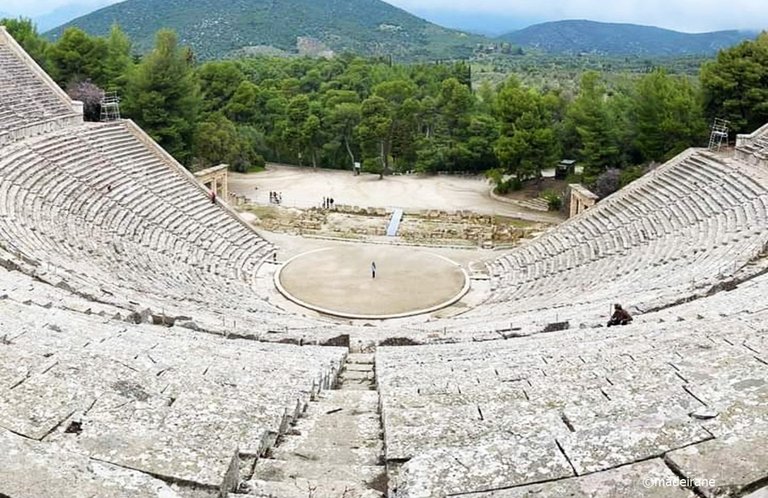
Interesting place and very nice pictures.
Congratulations, your post has been added to Pinmapple! 🎉🥳🍍
Did you know you have your own profile map?
And every post has their own map too!
Want to have your post on the map too?
Hope to visit it one day, I studied archaeology and I loved this theatre.
Wow -the theater is amazing. I'd love to see that !
!ALIVE
!LOLZ
!PIZZA
!PGM
@madeirane! You Are Alive so I just staked 0.1 $ALIVE to your account on behalf of @ hoosie. (1/10)
The tip has been paid for by the We Are Alive Tribe through the earnings on @alive.chat, feel free to swing by our daily chat any time you want, plus you can win Hive Power (2x 50 HP) and Alive Power (2x 500 AP) delegations (4 weeks), and Ecency Points (4x 50 EP), in our chat every day.

BUY AND STAKE THE PGM TO SEND A LOT OF TOKENS!
The tokens that the command sends are: 0.1 PGM-0.1 LVL-0.1 THGAMING-0.05 DEC-15 SBT-1 STARBITS-[0.00000001 BTC (SWAP.BTC) only if you have 2500 PGM in stake or more ]
5000 PGM IN STAKE = 2x rewards!
Discord
Support the curation account @ pgm-curator with a delegation 10 HP - 50 HP - 100 HP - 500 HP - 1000 HP
Get potential votes from @ pgm-curator by paying in PGM, here is a guide
I'm a bot, if you want a hand ask @ zottone444
$PIZZA slices delivered:
@hoosie(1/15) tipped @madeirane